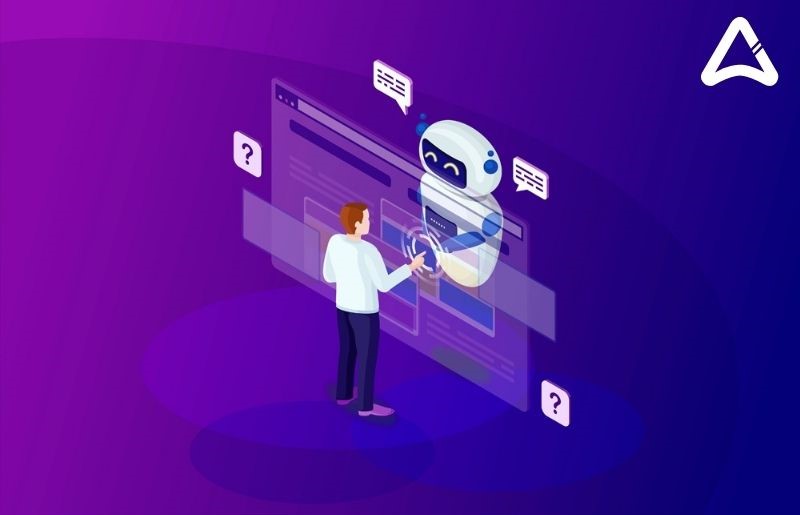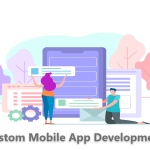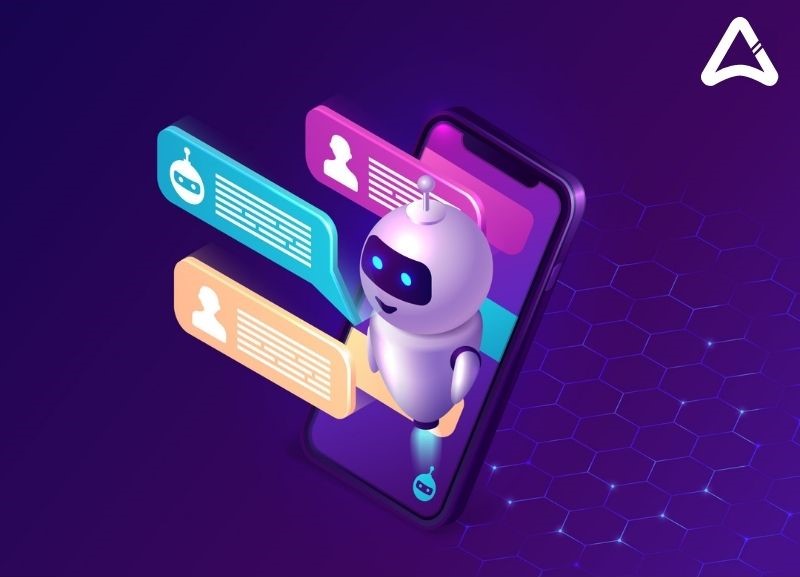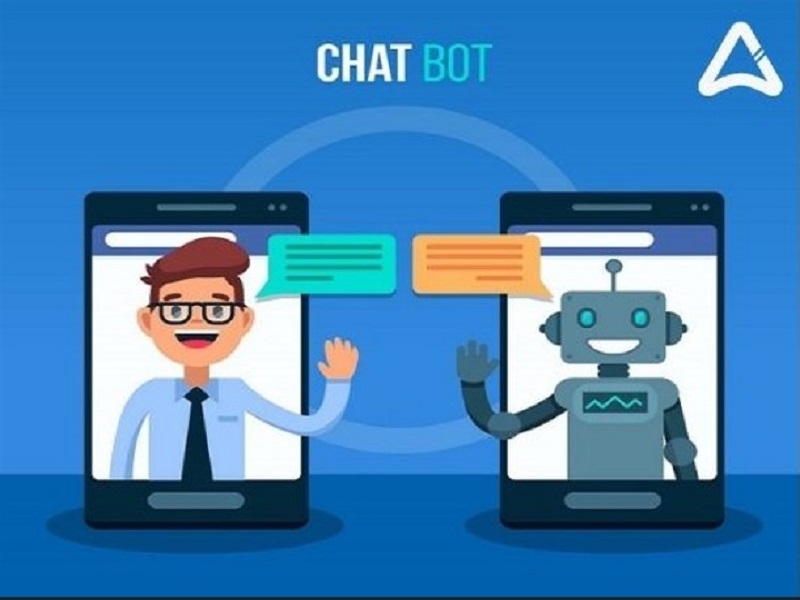A chatbot is one of those technological advances that no digital business can give up. We’re talking about a tool that has been changing the way companies relate to their customers. And it’s all due to the combination of constant availability and almost instant response time.
This makes them a very attractive way to streamline the process and improve relationships with your leads and customers. But if the subject is still a mystery to you, don’t worry. In this article, we’ll find out what chatbot is, how it works, what its key features and benefits are, how to create a chatbot, and more.
Good reading!
What is Chatbot?
A chatbot is a computer program that uses ever-improving artificial intelligence to mimic conversations with users across platforms and applications, such as Facebook and e-commerce sites. In other words, it acts as a kind of assistant that communicates and interacts with people through automated text messaging.
You, while surfing the Internet, have certainly been “approached” by a chatbot, although you have not realized it. But with a good example, it is easier to understand. Do you know when you visit a company website and a pop-up window pops up in the corner of the screen, making it available to answer questions?
This is a chatbot, a kind of active call center, as it doesn’t expect you to look for it. As its name suggests, the conversation over there is chat-style. But it is worth mentioning that this example chatbot is just one of the existing types of technology, as we will see in more detail in the next topic.
Check also here – All You Need To Know About Chatbots
Chatbot Types
Chatbots can be classified into two types: rule-based (simple chatbot) and artificial intelligence-based (advanced chatbot or “smart”).
The rating will depend on how these specific bots were programmed. For you to understand better, let’s explain each one in more detail.
Rule-based Chatbots
The operating logic of this type of bot is quite simple, hence the name of the simple chatbot. Essentially, as the user writes his message, the bot will identify and understand what that user means based on pre-written keywords in the software.
It is as if it has a FAQ programmed, a Q&A section ready to be triggered according to the term entered by the user. Each of these commands must be written by the developer separately, using regular expressions or other forms of analysis.
Based on this idea, if your message does not contain any pre-programmed keywords, the bot cannot understand it and, as a general rule, responds with messages such as “sorry, I don’t understand”.
Artificial Intelligence-based Chatbots
This type of chatbot is a bit more complex as it relies on artificial intelligence when communicating with users. Okay, but how does artificial intelligence really get into this story? Basically, the software records all words written by the user for further processing.
That way, instead of giving pre-programmed answers, the bot responds with appropriate suggestions on the subject, even asking an unscheduled question.
How do Chatbots work?
As we saw in the previous topic, chatbots have two operating logic based on mapping possible interactions with users. The first is based on the keywords and audience navigation pattern.
Initially, a database is built with frequently asked questions and answers, images, links, own vocabulary, among other elements. This content is then embedded in chatbot so that it can guide the user to the solution of their specific problem. The second logic is based on artificial intelligence, as explained earlier.
Thus, through a learning process, the software records user interactions and, based on this history, provide more accurate answers to each question. Although everything happens automatically in the tool, the secret is in the defaults. That is, in preparing content and developing chatbot information. Relatively easy to understand, isn’t it?
What are Chatbots for?
With increasingly informed and demanding consumers, companies need to invest in interactive agents in their daily operations, customer communication, and sales processes. This is a fact.
But How can Chatbots Help?
We will present some examples that will contribute to the understanding of their possible applications.
- Offer new relationship possibilities
- Chatbots extend reach and communication with your audience.
Many platforms already use this feature to reach the user with the right message at the right time, from the top to the bottom of the sales funnel. That is, they are prepared for different stages of the audience.
By enabling more personalized communication based on the history of user interactions, companies can build a more reliable relationship with each other, meeting specific demands. To streamline the customer service process
There are a variety of questions that most customers often ask, especially when it comes to e-commerce.
Here are just a few examples:
- What are the paying ways?
- How long to deliver?
- Can I exchange a product?
- What warranty is offered?
- How is freight cost determined?
- Why do I need to enter my social security number?
Thus, optimizing customer service requires having ready answers to common questions at hand. You can’t direct employees to write the same answers every time, especially if there’s technology to meet that demand. The solution? Embed a chatbot on your website or any other communication channel.
In addition to directing your team’s efforts to more interesting and important activities, you can provide faster customer responses and improve your experience. And if he leaves satisfied, the greater the chance to buy and refer your business to friends.
To Relate to Leads and Customers
As we mentioned, chatbots use artificial intelligence to record users’ words and later provide more effective answers. In this sense, you can use this feature as an integral part of your content marketing strategy. Yes, it is quite an opportunity.
Based on the lead or client message history, the bot may suggest content that is related to the words used and that piques the user’s interest. From the terms most sought after by them in the tool, you have valuable information to propose guidelines for your blog, for example. And the benefits of this strategy are evident.
By providing quality, relevant content, as well as helping you solve your problem, you tighten the relationship between your business and the public.
To share information among the team
Just as you can use a chatbot to communicate with your audience, you can also incorporate chatbot into software used for internal company communication.
This enables you to quickly share information across teams and departments, making operational and management tasks easier, and giving you more time to focus on more complex business issues.
In the end, we are also talking about an important productivity tool.
To talk to users where they are
There is no denying that instant messaging applications such as Messenger, WhatsApp, and Skype, as well as social networking, are one of the main forms of communication today.
As people already know and are used to these channels, it is only fair to incorporate bots in the spaces that your audience uses most to facilitate communication and optimize service. The challenge here is to identify which channels your audience likes, as there is a wide variety of them.
To Automate Sales
Do you mean that chatbots can automate even the sales process? That’s right! By typing what you want in the dialog, a chatbot will send the information to the department responsible for this process. In addition, the bot remembers your preferences and uses this information when you return.
That way, you don’t have to repeat the steps of the sales process multiple times. This is not a futuristic perspective, but a facility already in use. In the United States, Uber is an example of a company that uses this technology to its advantage. If you are talking to a person through Messenger and they send you their address, just click on that address and the driver will know your destination is beyond. Interesting, isn’t it?
What are the Advantages of having a Bot?
You may have realized numerous reasons to bet on this tool in your business. But in this topic, let’s make it all clearer yet. To summarize, here are some of the key advantages of deploying chatbots as part of your digital strategy.
Can handle a large volume of requests
If your business receives many requests at the same time, there is no need to increase the team’s model or ability to meet all of that demand. A well-built chatbot allows the company to be able to give back to multiple people simultaneously.
Are flexible
Chatbots have the advantage of being easily used in any industry. Unlike other products, which require you to do development and testing to switch platforms, chatbots are relatively simple to change. You just have to “train” the bot, giving the correct structure and message flow to switch your current field or sector.
Automate repetitive processes
Let’s be honest: No one likes to do the same work over and over again in a short period of time. Chatbots help you automate tasks that should be done frequently, saving time and increasing your team’s productivity.
In the end, they are a preventive factor to demotivation in the workplace, precisely because of the tedious repetition of tasks.
Improve lead generation and nutrition
Bots can collect important information from your audiences, such as location, gender, drinking habits, and more. This saves you time gathering all the information you need to understand who your target audience is.
With this information in hand, chatbots ensure that the flow is in the right direction for higher conversion rates, as they can predict and suggest content and responses at each stage of the customer’s buying journey.
Helps you Better Understand your Audience
There is a lot to learn from the most searched and used words in relation to what really matters to users.
Based on this bot analysis, companies can make more strategic and assertive decisions. And that’s because they get a deeper insight into their customers and their interests.
Improve sales
With the advancement of e-commerce, no one has to go to a physical store to buy a variety of items. Everything is available on the internet. So, nothing more natural than online stores are preferred – and it is like this since 2016 in Brazil. And that’s where chatbots prove to be a powerful weapon to sell more.
After all, they are available there to serve customers and sell 24 hours a day, seven days a week. In addition, by remembering a customer’s questions and tailoring their answers, they create a personal level of service that closely reflects human interaction, greatly influencing purchasing decision making. That is, they are robots, but they don’t even seem to be.
Conclusion
The chatbot theme is relatively new. There are still many businesses that are at the beginning of the strategy, beginning to understand its operation and advantages. If you are at this stage, the time is now. This is a great time to learn more about technology and extract everything the tool can offer you.
In addition, there is no reason to believe that this is all just the beginning. We can expect even better chatbots as technology advances. Ready to invest in chatbots for your business and innovate communication with your audience? Do contact us!





